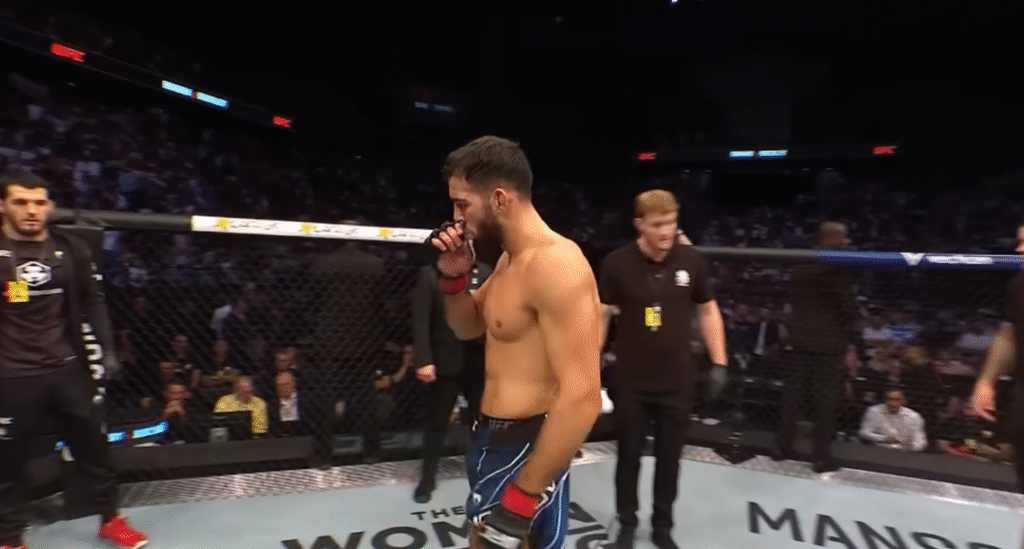The UFC antitrust settlement has caused a stir in the combat sports community, with fighters, attorneys, and fans all considering its implications. The UFC’s empire was based on aggressive business strategies, captivating personalities, and amazing fights for many years. The promotion made record profits, but beneath the glitz, hundreds of fighters had contracts that drastically decreased their revenue share.
The $375 million settlement, which was accepted following years of court cases, is a statement rather than just a payment. It was an acknowledgement that their complaints were legitimate and that the Octagon’s attention frequently concealed contractual shadows for the 1,200 fighters involved in the case. Anderson Silva’s $10.3 million payout was the biggest, which is both poetic and illuminating. The UFC’s golden age was characterized by Silva, who has long been hailed as “The Spider,” but his settlement check represents years in which his earnings were less than what similar athletes in other leagues might have earned.
Social media has been ablaze with comparisons lately. NBA players bargained through unions for revenue splits that were close to 50%, but UFC fighters only made about 20%. Those differences are remarkably similar to those that existed in boxing prior to the evolution of promotional systems brought about by figures like Oscar De La Hoya and Muhammad Ali. As a result, the settlement seems especially advantageous to future fighters who now perceive a path toward accountability as well as to those who receive checks.
Table: UFC Antitrust Settlement Key Details
| Category | Information |
|---|---|
| Case Name | Cung Le, et al. v. Zuffa, LLC (UFC) |
| Court | United States District Court, District of Nevada |
| Timeframe Covered | December 16, 2010 – June 30, 2017 (first class) |
| Fighters Involved | ~1,200 current and former UFC fighters |
| Settlement Amount | $375 million (reduced after expenses to ~$251 million) |
| Highest Individual Payout | Anderson Silva – $10.3 million |
| Median Payout | $86,034 |
| Lowest Payout | $16,138 |
| Average Payout | $231,022 |
| Main Allegation | UFC used anticompetitive tactics to suppress fighter pay and options |
| Fighter Compensation | Fighters alleged they earned ~20% of event revenue vs. 50% in other sports |
| Settlement Website | Official UFC Class Action |

The payouts themselves highlight how inconsistent fighter pay is. At the top end, Silva’s $10.3 million makes headlines, but the median payout of $86,000 highlights the predicament of mid-tier fighters who, in spite of years of physical sacrifice, were frequently paid too little for the value they produced. 35 fighters will receive more than $1 million, while over 500 fighters will receive more than $100,000 each. Even though this distribution is not uniform, it is incredibly effective in letting fighters know that their voices matter when they are heard together.
In 2014, Cung Le, a former fighter who is now an advocate, joined forces with Jon Fitch, Brandon Vera, and Nathan Quarry to initiate this case. Despite being ridiculed at the time, their perseverance has proven to be incredibly resilient. It demonstrates how the growing convergence of labor rights, sports, and the law can be brought to light by a small but dedicated group of people. They reframed the debate by introducing antitrust law into the cage: Was UFC proactively controlling the market to the detriment of its athletes, or was it just promoting fights? The courts determined that the latter claim was sufficiently credible to support this historic settlement.
This result’s timing is what makes it so effective. The UFC has evolved into a worldwide entertainment brand since joining forces with WWE to form TKO Group. Fighters would have faced an even more resource-rich corporate giant if the settlement had not been reached. Rather, fighters are vindicated and compensated at the end of the case. In the history of sports labor, this moment might be just as significant as the NFL players’ strikes that changed free agency or Curt Flood’s challenge to Major League Baseball’s reserve clause.
Fans frequently wonder why celebrities like Conor McGregor did not receive the largest payouts. The answer is straightforward: McGregor was marginally outside of the class period during his prime years. His enormous earnings, however, demonstrated what was possible for fighters who defied the promotional norm, so his career is still instructive. Now, the settlement guarantees that even those without McGregor’s clout benefit.
Beyond mixed martial arts, the UFC settlement has lessons for society. It serves as a reminder that, unless challenged, unbridled monopolies can stifle just compensation in a variety of industries, including sports. Through the use of sophisticated legal tactics, the fighters have demonstrated that even those who seem helpless can influence long-standing structures to be more equitable. This instance demonstrates very clearly how courage, perseverance, and group effort can tip previously unbalanced scales.
The cultural influence is also important. Gladiators who sacrifice for glory, frequently at the expense of their long-term health and financial security, have long been idealized as fighters. This settlement, which recognizes their worth in actual money, upends that narrative. By doing this, it significantly raised awareness of fighter advocacy and inspired other athletes to challenge their contracts and call for openness.
Johnson v. Zuffa, a lawsuit that will affect fighters starting in 2017, is another one the UFC must deal with in the future. The financial foundation of MMA might undergo further change if that case is successful. The momentum is already increasing. Incorporating boxing lessons, drawing on similarities with major leagues, and acknowledging the tremendous sacrifices made by fighters could result in more equitable contracts and revenue-sharing arrangements in future negotiations.

